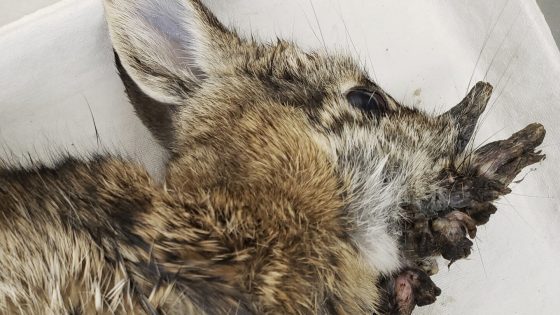A recent health topic making headlines is the Shope papillomavirus, which has been affecting rabbits in Fort Collins, Colorado. These rabbits, often dubbed “Frankenstein bunnies,” exhibit bizarre hornlike growths that may alarm onlookers. However, experts clarify that this virus is relatively harmless and has been known for nearly a century.
- Rabbits in Colorado have hornlike growths.
- Growths are caused by Shope papillomavirus.
- Nicknames include “Frankenstein bunnies” and “zombie rabbits.”
- Virus linked to ancient jackalope folklore.
- Infected rabbits are common in summer.
- Growths usually harmless unless near eyes.
As of 2025-08-14 06:18:00, sightings of these infected rabbits have surged, prompting local residents to share photos and concerns. The virus, spread by fleas and ticks, primarily affects rabbits but poses no risk to humans or pets.
This situation raises an important health question: How do viruses like the Shope papillomavirus contribute to our understanding of disease? While the growths may appear alarming, they are a reminder of the complex relationship between viruses and animal health.
- Monitor local wildlife for unusual signs.
- Educate yourself on common animal viruses.
- Keep pets away from wild rabbits to prevent potential transmission.
As we look to the future, staying informed about animal health can enhance our understanding of viral diseases and their implications for both wildlife and human health.
















![[Adobe Stock]](https://news.faharas.net/wp-content/uploads/2025/07/Ketogenic-Diet-Boosts-Brain-Blood-Flow-by-22-and-BDNF-230x129.jpg)














